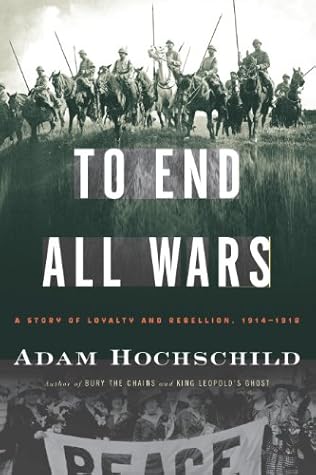More on this book
Community
Kindle Notes & Highlights
Read between
July 3, 2014 - July 3, 2015
The bodies of soldiers of the British Empire lie in 400 cemeteries in the Somme battlefield region alone, a rough crescent of territory less than 20 miles long, but graves are not the only mark the war has made on the land.
On the fields that have been smoothed out again, like those surrounding the Devonshires’ cemetery, some of the tractors have armor plating beneath the driver’s seat, because harvesting machinery cannot distinguish between potatoes, sugar beets, and live shells. More than 700 million artillery and mortar rounds were fired on the Western Front between 1914 and 1918, of which an estimated 15 percent failed to explode. Every year these leftover shells kill people—36 in 1991 alone, for instance, when France excavated the track bed for a new high-speed rail line.
Like those shells, the First World War itself has remained in our lives, below the surface, because we live in a world that was so much formed by it and by the industrialized total warfare it inaugurated.
But from 1914 to 1918, by contrast, in all the participating countries the war was astonishingly lethal for their ruling classes. On both sides, officers were far more likely to be killed than the men whom they led over the parapets of trenches and into machine-gun fire, and they themselves were often from society’s highest reaches. Roughly 12 percent of all British soldiers who took part in the war were killed, for instance, but for peers or sons of peers in uniform the figure was 19 percent. Of all men who graduated from Oxford in 1913, 31 percent were killed.
Even the victors were losers: Britain and France together suffered more than two million dead and ended the war deep in debt; protests sparked by returning colonial veterans began the long unraveling of the British Empire, and a swath of northern France was reduced to ashes.
Where today we might see mindless killing, many of those who presided over the war’s battles saw only nobility and heroism. “They advanced in line after line,” recorded one British general of his men in action on that fateful July 1, 1916, at the Somme, writing in the stilted third-person usage of official reports, “. . . and not a man shirked going through the extremely heavy barrage, or facing the machine-gun and rifle fire that finally wiped them out. . . . He saw the lines which advanced in such admirable order melting away under the fire. Yet not a man wavered, broke the ranks, or
...more
For any wellborn young Englishman making a military career, it was only natural to prefer the cavalry. Joining it was not the privilege of all, however, for this was the army’s most expensive branch. Until 1871, British officers had to purchase their commissions, as one might buy membership in an exclusive club. (“Good God,” one new subaltern is said to have remarked when a deposit from the War Office appeared on his bank statement. “I didn’t know we were paid.”) After reforms abolished the sale of commissions, an infantry or artillery lieutenant might belong to a regiment so lacking in
...more
The late-nineteenth-century horseman’s sword and lance were not so different from those wielded at Agincourt in 1415, and so cavalry warfare embodied the idea that in battle it was not modern weaponry that mattered but the courage and skill of the warrior.
In John French’s England, the boulevards along which Victoria’s Jubilee parade marched were splendid indeed, but large stretches of London and other cities were less glorious, for little of the wealth the country drew from its colonies ever reached the poor.
If the country gentleman’s role in life was to be on horseback, the upper-class Victorian woman’s was to be mistress of a grand house,


